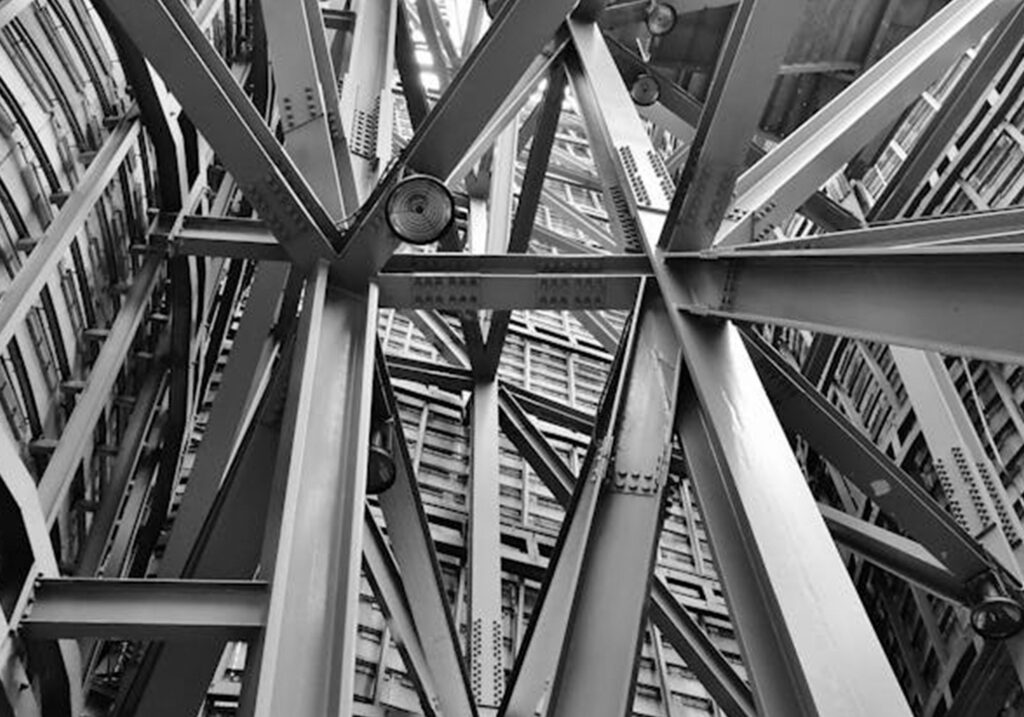Metal buildings have revolutionized the construction industry, offering durability, cost-effectiveness, and versatility that traditional building materials often lack. Used for residential, commercial, agricultural, or industrial purposes, metal buildings provide a reliable and long-lasting solution. They are widely recognized for their ability to withstand extreme weather conditions, resist fire and pests, and require minimal maintenance over time.
There are several types of metal buildings, each designed to serve specific functions. Some are used for storage, others for housing, while some accommodate large-scale industrial operations. Understanding the different types of metal buildings can help individuals and businesses make informed decisions based on their needs, budget, and location.
Clear Span Metal Buildings
Clear span metal buildings are designed to provide large open spaces without internal support columns, making them highly desirable for industries that require unobstructed interiors. These structures use strong steel frameworks to create expansive areas that maximize usable space. Because there are no internal support columns, businesses and organizations have greater flexibility in how they arrange and utilize the space. This makes clear span buildings ideal for warehouses, sports arenas, airplane hangars, and convention centers, where large, open layouts are essential. The ability to customize the interior without the constraints of load-bearing columns provides significant advantages for operations that require easy mobility, such as aircraft storage or sports facilities.
To ensure stability and durability, clear span buildings are constructed using advanced engineering techniques. Their steel frames are reinforced to handle heavy loads and harsh weather conditions, making them a reliable choice for long-term use. The walls and roofs of these buildings can be strengthened with additional supports, and the materials used are often treated to resist corrosion and rust. These features allow clear span buildings to stand up to high winds, snow loads, and seismic activity, ensuring they remain structurally sound over time.
Customization is another major benefit of clear span metal buildings. They can be equipped with insulation, ventilation systems, and advanced lighting solutions to create a more energy-efficient environment. Many businesses also integrate modern technology, such as automated doors, skylights, and climate control systems, to optimize functionality and reduce operational costs. Whether used for manufacturing, storage, or entertainment purposes, clear span buildings provide a durable and adaptable solution that meets a variety of needs. Their fast construction time, combined with their efficiency and minimal maintenance requirements, makes them an increasingly popular choice across various industries.
Rigid Frame Metal Buildings
Rigid frame metal buildings are among the most durable and stable metal structures available today. They are characterized by their heavy-duty steel framework, which provides exceptional strength and resilience. These buildings are designed to withstand extreme weather conditions, including high winds, earthquakes, and heavy snowfall, making them a reliable choice for both commercial and industrial applications. Unlike traditional wood or concrete structures, rigid frame metal buildings are resistant to warping, cracking, and termite damage, ensuring longevity and structural integrity over time. Their ability to support multi-story designs also makes them suitable for a wide range of large-scale projects.
One of the standout features of rigid frame buildings is their adaptability. They can be customized with different roof styles, such as gable, single-slope, and arch configurations, depending on the specific needs of the project. This versatility allows them to be used for various purposes, including manufacturing plants, office buildings, retail spaces, and distribution centers. The ability to modify the design according to business requirements ensures that these buildings remain functional and efficient. Additionally, rigid frame buildings can be expanded over time, allowing businesses to scale their operations without the need for costly and time-consuming renovations.
Another significant advantage of rigid frame metal buildings is their energy efficiency. These structures can be insulated effectively to regulate indoor temperatures, reducing heating and cooling costs throughout the year. Advanced insulation materials help prevent heat loss in the winter and keep interiors cool in the summer, making them a cost-effective option for businesses looking to improve energy efficiency. Moreover, these buildings can be fitted with modern ventilation systems, solar panels, and energy-efficient lighting to further enhance sustainability. Their low maintenance requirements, combined with their long-lasting durability, make rigid frame metal buildings a smart investment for businesses seeking a strong, adaptable, and efficient structure.
Arch Metal Buildings (Quonset Huts)
Arch metal buildings, often referred to as Quonset huts, have a distinctive semicircular shape that provides exceptional strength and durability. Originally developed for military use, these structures have become popular for commercial and residential applications due to their ease of assembly and cost-effectiveness.
The arched design of these buildings allows them to distribute weight evenly, making them highly resistant to extreme weather conditions. They are commonly used for storage facilities, workshops, garages, and small homes. Due to their prefabricated nature, they can be quickly assembled with minimal labor, reducing construction time and costs. Additionally, their unique design eliminates the need for traditional support beams, maximizing interior space.
Metal Barns and Agricultural Buildings
For farmers and agricultural businesses, metal barns and agricultural buildings offer a superior alternative to traditional wooden structures. These buildings are designed to house livestock, store feed and equipment, and provide shelter from the elements. Compared to wooden barns, metal barns require significantly less maintenance and offer greater protection against pests, rot, and fire.
Agricultural metal buildings can be customized to meet specific needs. They can include features such as ventilation systems, roll-up doors, and partitioned sections for different types of livestock. Many farmers opt for metal barns because they provide a long-lasting, cost-effective solution that can be easily expanded as farming operations grow. Additionally, metal agricultural buildings can be insulated to maintain stable temperatures, which is particularly beneficial for dairy farms and poultry houses.
Prefabricated Metal Buildings
Prefabricated metal buildings, also known as pre-engineered metal buildings (PEMBs), are manufactured off-site and delivered in sections for quick assembly. These structures have gained widespread popularity due to their efficiency, affordability, and ease of installation. Because they are designed and fabricated in a controlled environment, they experience fewer construction errors, leading to a faster build process.
One of the major advantages of prefabricated metal buildings is their customizability. They can be designed for various purposes, including retail stores, office spaces, warehouses, and even residential homes. These buildings are also highly energy-efficient, as they can be equipped with insulated panels to regulate indoor temperatures and reduce heating and cooling costs. Their streamlined construction process results in minimal waste, making them an environmentally friendly option.
Metal Garages and Carports
Metal garages and carports are excellent choices for vehicle storage and protection. Unlike traditional wooden or concrete garages, metal garages offer enhanced durability and require minimal maintenance. These structures are commonly used for residential and commercial purposes to shield cars, motorcycles, boats, and RVs from harsh weather conditions.
Metal garages can be fully enclosed, providing security and protection from theft, or they can be designed with open sides, similar to carports. Carports, while offering less security, are a more cost-effective option for homeowners looking to protect their vehicles from sun, rain, and snow. Both metal garages and carports can be customized with additional features such as roll-up doors, insulation, and ventilation systems.
Mini Storage and Self-Storage Metal Buildings
Mini storage buildings, also known as self-storage units, are widely used by individuals and businesses looking for secure and accessible storage solutions. These buildings consist of multiple units that can be rented out to tenants for storing personal belongings, business inventory, or equipment. They are typically constructed using durable steel panels and are designed to withstand wear and tear.
Self-storage metal buildings offer numerous benefits, including high security, low maintenance, and long-term durability. They can be designed with climate-controlled units for sensitive items, such as electronics and documents. Many storage facility owners opt for metal buildings due to their cost-effectiveness and quick construction timelines. Additionally, these buildings can be expanded easily to accommodate growing storage demands.
Industrial Metal Buildings
Industrial metal buildings are designed to support large-scale manufacturing, processing, and storage operations. These structures are built to handle heavy machinery, high foot traffic, and extensive inventories. They are commonly used in industries such as automotive manufacturing, food processing, and logistics.
Due to their robust construction, industrial metal buildings can accommodate specialized features such as crane systems, mezzanine levels, and large bay doors for easy loading and unloading. These buildings are engineered to provide maximum efficiency and safety for workers, with ventilation systems and fire-resistant materials incorporated into their designs. Their ability to support heavy loads and withstand harsh environments makes them a preferred choice for industrial applications.
Metal Homes and Barndominiums
Metal homes and barndominiums have gained popularity as alternative housing options due to their affordability, durability, and modern aesthetics. Unlike traditional houses made of wood or concrete, metal homes are constructed with steel frames and panels, offering superior resistance to fire, pests, and extreme weather conditions.
Barndominiums, a hybrid of a barn and a residential home, have become particularly trendy. These structures combine open floor plans with rustic or contemporary designs, making them an attractive option for homeowners looking for spacious and cost-effective living spaces. Metal homes can be customized with various interior finishes, including wood paneling, drywall, and high-end fixtures. Many homeowners choose metal homes for their energy efficiency, as they can be insulated to reduce heating and cooling costs.
Conclusion
The versatility of metal buildings makes them an excellent choice for a wide range of applications. From clear span warehouses and rigid frame factories to Quonset huts and barndominiums, each type of metal building serves a unique purpose. Their durability, cost-effectiveness, and efficiency have contributed to their growing popularity across various industries.
Choosing the right type of metal building depends on factors such as intended use, budget, climate, and customization preferences. With advancements in construction technology, metal buildings continue to evolve, offering even more innovative and sustainable solutions for residential, commercial, agricultural, and industrial needs. Whether for a storage facility, office space, or modern home, metal buildings provide a reliable and long-lasting investment.

